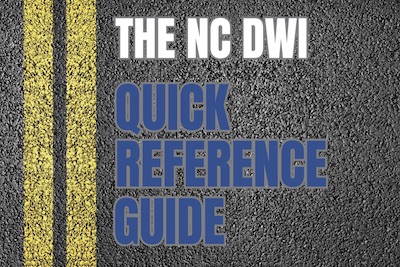What are “Controlled Substances?”
 A controlled substance is a chemical or “drug” that either the State of North Carolina or the United States government “controls.”
A controlled substance is a chemical or “drug” that either the State of North Carolina or the United States government “controls.”
Controlled substances include both legal and illegal drugs.
For example, alcohol in a bottle of beer is a controlled substance. So is the prescription medication a loved one may take to control their anxiety or depression or even heart disease.
All drugs (in NC State Court) are classified as either a Schedule VI (Schedule 6) all the way to Schedule I (Schedule 1) controlled substance.
Schedule I (Schedule One) controlled substances are generally thought to be the most dangerous or harmful to people.
Schedule VI (Schedule Six) controlled substances may be thought of as the least problematic or dangerous.
"While the difference between felony and misdemeanor drug charges can be based on the schedule of the controlled substance, prosecutors also consider the amount of controlled substances and whether there is an intent to distribute."
- Bill Powers, Charlotte Drug Crimes Lawyer
As such, possession of Marijuana in small amounts might ordinarily be prosecuted as a low-level misdemeanor charge in North Carolina.
Marijuana is a Schedule VI controlled substance.
At the same time, felony charges can result for things like “Possession with Intent to Sell or Deliver” Marijuana (PWISD MJ).
The State regularly brings Trafficking in Marijuana charges in Mecklenburg County when people fly into the Charlotte-Douglas Airport with pounds of marijuana in their checked bags.
The lawyers at our Charlotte law office often refer to those as “airport cases.”
Punishments for the individual type of felony can depend a lot on the classification of the controlled substance (drug), where a conviction for a Schedule I offense carries the potential for the most severe punishment and Schedule VI drugs may result only in probation.
![What are Controlled Substances?]() Schedule I: Schedule I drugs are believed to be the most dangerous, present the highest potential for substance abuse and have no accepted medical use. Schedule I drugs include things like:
Schedule I: Schedule I drugs are believed to be the most dangerous, present the highest potential for substance abuse and have no accepted medical use. Schedule I drugs include things like:- Ecstasy “Molly” MDMA
- Methaqualone – Quaaludes
- Heroin – China White – Black Tar – White Powder – Horse - “H”
- GHB – Gamma Hydroxybutyrate - “G”
- Peyote – Black Button – Cactus – Shaman
Schedule II: Schedule II drugs are believed to have a high potential for abuse, but also have accepted medical uses. Accepted medical use is met with substantial restrictions, and abuse of Schedule II drugs can lead to psychological and/or physical dependence. Schedule II controlled substances include things like:
- Hydrocodone
- Methadone
- Morphine
- Cocaine
- Opium
- Codeine
- Methamphetamine “Meth”
- Ritalin
Schedule III: Schedule III controlled substances carry the potential for abuse, although that is generally thought of as less of a risk than Schedule I and II drugs. Schedule III drugs are acceptable for medical use. Abuse of such controlled substances can lead to dependence issues, consider lower-risk for physical dependence and high-risk for psychological dependence. Schedule III drugs include things like:
- Steroids (Anabolic Steroids)
- Barbiturates
- Ketamine - “K” - Cat Valium – Special K – Super C
Schedule IV: Schedule IV drugs are believed to relatively low potential for substance abuse, are accepted for medical use. Abuse of Schedule IV controlled substances may lead to some form of limited psychological and/or physical dependence. Examples of Schedule IV drugs include things like:
- Benzodiazepine – Xanax – Alprazolam - “Bars” - Planks – School Bus
- Darvon
- Valium
- Clonazepam
- Barbital
Schedule V: Schedule V drugs are thought to possess a lower potential for abuse than Schedule I through Schedule IV drugs. They also have an accepted medical use. Substance abuse can lead to some level of limited physical or psychological dependence. Schedule V controlled substances include things like:
- Codeine – Cough Syrup – Over the Counter Cold Medicines
Schedule VI: Schedule VI controlled substances have little to low chance for potential abuse, but still are not considered to have an accepted medical use. Substance abuse may result in a limited psychological or physical dependence. Marijuana in North Carolina is a Schedule VI drug. There is an limited, authorized “medical use,” although North Carolina, unlike other states does not recognize “medical marijuana.” Schedule VII drugs include things like:
- Marijuana
- Hash
- Hashish Oil
- Can I fight my drug charges?
- Possession of Drug Paraphernalia
- What is an Indictment or True Bill?
- What happens if I go to court by myself?
- NC Drug Crimes
- Schedule of Controlled Substances in North Carolina
- What is Simple Possess Sch VI CS M in North Carolina?
- North Carolina Drug Laws: Felony Drug Charges and Misdemeanor Drug Possession Charges
- Site Map
- North Carolina Criminal Law Chapter 90-95: Possession of a Controlled Substance With Intent to Manufacture, Sell or Deliver
- How to Beat a DUI-DWI: Top 9 Ways for Beating a NC DWI
- How the Police Conduct a Criminal Investigation Before Arrest
 Powers Law Firm PA Home
Powers Law Firm PA Home














 Schedule I: Schedule I drugs are believed to be the most dangerous, present the highest potential for substance abuse and have no accepted medical use. Schedule I drugs include things like:
Schedule I: Schedule I drugs are believed to be the most dangerous, present the highest potential for substance abuse and have no accepted medical use. Schedule I drugs include things like:




